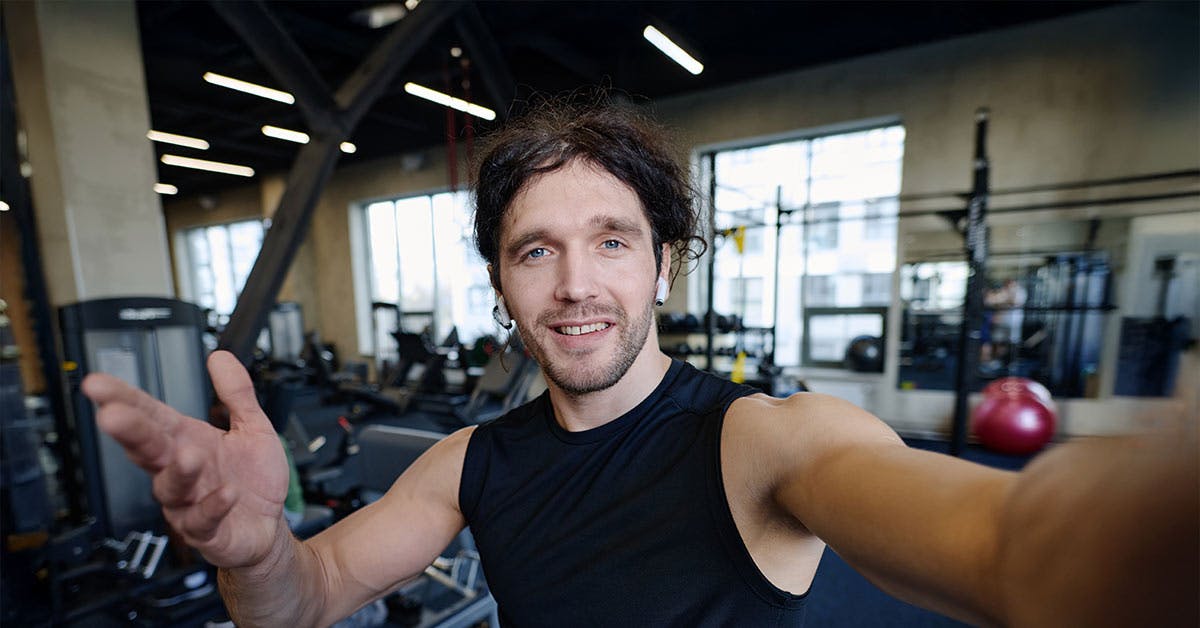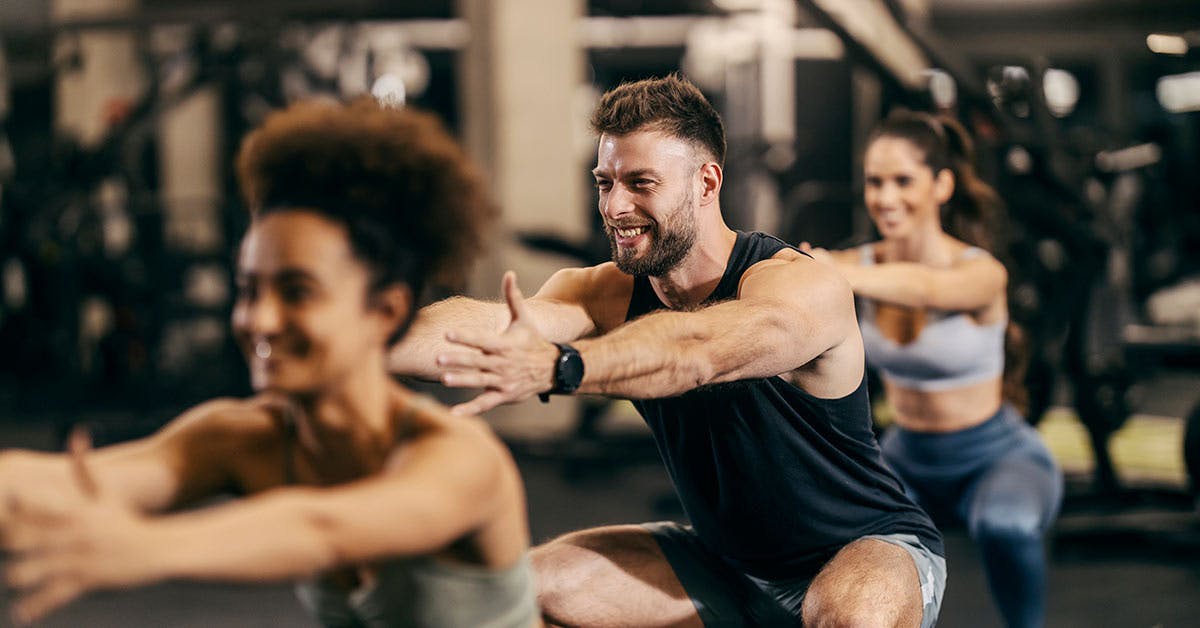19 Aug 2025
How to Sell Yourself on Social Media (Without Feeling “Cringe”)
Social media can be a game-changer for growing a fitness business or personal training brand – but many fitness professionals hesitate to put themselves out there for fear of coming off as “cringe.” The good news is that with the right mindset and strategy, you can promote yourself confidently and authentically. This guide will show why a social media presence is essential in the fitness industry and how to build your personal brand without feeling embarrassed.
Why Social Media Matters for Your Fitness Brand
In today’s world, a strong social media presence isn’t optional – it’s expected. Over 90% of small businesses (including gyms, group fitness instructors and personal trainers) now leverage social media as part of their marketing strategy. It’s where your future clients are discovering and vetting fitness services. In fact, a staggering 84% of fitness enthusiasts find their next workout through social platforms. If you’re not visible online, you’re missing out on a huge audience.
Huge fitness audience online
On Instagram alone, the hashtag #fitness has over 500 million followers (as of 2024). Fitness is one of the most popular categories on social media and people actively seek workout tips, inspiration and trainers to follow.
Gen Z lives on social
This generation uses social media for everything – from product discovery to community and advice. Around 89% of Gen Z are on Instagram and 82% on TikTok, making those platforms key places to connect with young fitness consumers.
Clients check you out online
Before contacting you, potential clients may look at your Instagram or TikTok to see your expertise and personality. Over half of consumers now discover new brands or businesses via social media. A credible, engaging profile can serve as a portfolio that builds trust even before you speak to a client.
Bottom line
Social media is a powerful tool to showcase your skills, philosophy and results. When used right, it can funnel a steady stream of interested followers into paying clients. Next, we’ll address the elephant in the room – the fear of being “cringe” and how to overcome it.
Understanding the Fear of “Cringe”
If you feel uncomfortable “selling yourself” online, you’re not alone. Many people worry that putting effort into self-promotion will look embarrassing. This fear of being labeled “cringe” has roots in a digital native’s upbringing. As true digital natives, we grew up under the gaze of social media and dreaded public embarrassment. One report noted that young people coped by “filtering themselves…and rejecting any form of visible effort or emotional vulnerability” to avoid ridicule. In other words, being earnest online felt risky.
However, here’s an interesting shift: social users are starting to reclaim “cringe” as authenticity. Many are realizing that trying (and maybe stumbling a bit) is better than holding back. Their new tongue-in-cheek motto has become “to be cringe is to be free”. In practice, this means there’s growing appreciation for people who are genuine and passionate online, even if it’s not perfectly polished. What used to be mocked is now often seen as refreshingly real.
Takeaway: The very thing you fear (coming off as cringe) might actually be the thing that endears you to others. Showing earnest effort – that you truly care about your craft and clients – is nothing to be ashamed of. In the next sections, we’ll make sure your content comes across as authentic and confident, not cringey.
What Really Makes Content Cringe vs. Cool
It helps to define what actually makes a post “cringe” in the eyes of social media users. Hint: it’s usually not the fact that you’re trying or promoting your business – it’s how you do it. Here are some common cringe pitfalls and how to avoid them:
Inauthenticity: We can spot insincerity a mile away. Content feels cringe when it’s out of touch, overly self-promotional, or not true to you. For example, forcing slang or memes that you don’t really get, or copying another influencer’s style, can come off as fake. Avoid this by being yourself – use your own voice and share things you genuinely believe in.
Overly polished “ad speak”: If your posts sound like impersonal advertisements or corporate marketing, younger audiences will tune out. Instead of slick infomercials, aim for a more casual, conversational tone as if you’re talking to a friend. Authenticity > perfection.
Jumping on every trend (even if it’s not you): It might be tempting to do the latest TikTok dance or use a trending audio because “everyone is doing it.” But if it doesn’t fit your brand or you’re not comfortable, it may look awkward. It’s better to skip a trend than to do it in a cringey way. Focus on relevant trends (e.g. a fun fitness challenge) and put your own genuine spin on them.
Being overly concerned with looking cool: Ironically, worrying too much about not being cringe can make you less authentic. Social media audiences today appreciate a bit of vulnerability and humor. Don’t be afraid to poke a little fun at yourself or admit challenges (e.g. “I totally failed my first pull-up attempt – but here’s how I improved…”). It makes you human and relatable.
By steering clear of these missteps, you’ll already be far from cringey.
Building Your Personal Fitness Brand
Think of your social media presence as personal branding – showcasing who you are and how you can help people rather than “self-promotion”. Here are best practices to craft a brand that feels authentic to you and attracts clients:
Define your niche and message
Start by identifying what makes you unique as a fitness professional. Are you a weight-loss coach for beginners? A vegan bodybuilder? A yoga instructor with a mental-health focus? Clarify your niche and the core message or vibe you want to convey. This clarity will guide all your content. When you know what you stand for, you won’t feel like you’re just bragging – you’re sharing a purpose.
Choose the right platforms
Focus on the social channels where your target audience spends time. Currently, Instagram and TikTok are top platforms for discovery and engagement. Instagram is great for visual fitness content while TikTok is ideal for quick tips and personality-driven clips. You don’t have to be everywhere – pick 1-2 platforms and do them well. Make sure your profile bio on each clearly states who you are and how you help (e.g. “Personal Trainer helping people get fit from inside their own homes. Online coaching available – DM for info!”).
Lead with value, not vanity
Focus on helping others. Share content that educates, inspires or entertains your audience, rather than just “look how great I am.” For example:
When your content provides real value, you can feel proud of promoting it. You’re not bragging; you’re building trust and showcasing your expertise.
Post workout tips, quick exercise demos or myth-busting facts your followers can use.
Share client success stories or transformations (with permission) to inspire others, rather than just selfies of your own abs.
Give a peek into your own fitness journey – including struggles you’ve overcome – to motivate and connect with people on a deeper level.
Be consistent and engaging
Consistency builds credibility. Aim to post regularly (e.g. a few times a week) so followers see you’re serious and active. But social media is not a “set it and forget it” broadcast channel – it’s a two-way street. Engage with your community: reply to comments, answer DMs or questions and acknowledge your followers. It makes you approachable and shows you care, which in turn deepens loyalty.
Show your personality
People don’t just buy training programs; they buy into you as a person. Let your quirks, humor and style shine through. Whether you’re a high-energy trainer or a calm, zen coach, let that come across in your stories and captions. Don’t be afraid to use storytelling – share a bit about why you got into fitness, or a day-in-the-life of you training and meal-prepping. Authentic stories make you memorable. Remember, authenticity is a must – 59% of consumers say a brand’s content feels credible when it’s authentic. So just be real, not what you think a “fitness influencer” should be.
Use the formats your audience loves
Adapt your content to what works on each platform. On Instagram and TikTok, short-form video is king – think 15-second exercise demos, quick tip series or motivational snippets. These bite-sized videos tend to grab attention. Static images (like before-and-after photos or infographics) also perform well for fitness content. You can occasionally do longer videos on YouTube if you have deeper knowledge to share, but to start, keep it short and sweet. Use trending music or hashtags if they fit your content, but don’t force it. A mix of workout footage, a piece to camera or personal moments (e.g. a post-gym selfie with a genuine caption) can create a well-rounded, engaging feed.

Your Starter Toolkit: How to Begin
Getting started is often the hardest part. Here’s a simple step-by-step roadmap to launch your social media presence confidently:
Optimize your profile: If you haven’t already, switch to a professional or creator account on Instagram/TikTok for analytics. Use a clear profile photo (friendly headshot or you in action). Craft a bio that states your niche and a hint of personality (e.g. “Certified personal trainer | Helping women lift heavy & love their bodies”). Include a link – preferably to a simple website or Linktree with info on your services.
Plan 3-5 content pillars: Brainstorm a few categories of content you’ll post regularly. For example, Workout Tips, Nutrition Hacks, Client Wins, Myth Busting, Motivation/Mindset. This will ensure your content stays varied and valuable. Under each pillar, jot down a few post ideas. (Tip: educational or how-to posts establish you as an expert and are highly shareable.)
Batch create initial content: To reduce day-of posting anxiety, prepare a week or two of content in advance. Film a handful of short workout clips or trainer tips in one session. Write captions ahead of time. Having posts ready to go will help you stay consistent without daily stress.
Just hit publish (and don’t overthink it): When it’s time to post, don’t psych yourself out. Remind yourself of your why – you’re here to help others improve their fitness. The first post is the scariest, but it gets easier. You might be surprised – people are often supportive when someone puts themselves out there earnestly.
Learn and iterate: Pay attention to which posts get good responses – do people love your nutrition memes but didn’t care much about your 5-minute plank video? That’s fine! Use insights to guide future content. Also, note your own feelings: which posts felt really “you” and which felt forced? Lean into the authentic ones.
Network and collaborate: Don’t operate in a vacuum. Support other fitness creators and local businesses by following them, leaving thoughtful comments or sharing their posts. Often they’ll return the favor. Collaborations (like doing an Instagram Live together, or a joint giveaway) can expose you to each other’s audiences and bolster credibility.
Final Tips: Confidence, Not Cringe
Mindset is everything. As you put yourself out there, stay positive and patient with yourself. Here are some final tips to keep in mind:
Done is better than perfect
Especially in the beginning, don’t paralyze yourself aiming for perfection. A slightly grainy workout video that actually gets posted beats a professional video that sits in your drafts forever. Social media moves fast; you can always improve next time. Give yourself permission to post content that’s maybe 80% polished – as long as it’s honest and helpful, it’s good enough to share.
Focus on those you help
Whenever self-doubt creeps in, shift your focus to your audience. Even if your follower count is small, imagine you’re speaking to one person who really needs to hear your message. If your tip helps even one busy student fit in a workout, or inspires one friend to start exercising, that’s a win.
Embrace your growth journey
Instead of fearing “cringe,” reframe it as growth. A year from now, you might cringe at your older posts – and that’s a sign you’ve leveled up! By owning your journey, you take the power away from any potential critics.
Authenticity wins in the end
The fitness influencers who thrive long-term aren’t necessarily the most ripped or the most camera-genic – they’re the ones who build genuine connections. Trying to please everyone or putting on a fake persona is exhausting (and yes, cringey).
Finally, don’t let fear stop you from sharing your gifts. You became a fitness professional to change lives. Every post is an opportunity to impact someone and to invite them into your world. With practice, what felt scary will start to feel empowering. You’ll develop your voice and a community that values what you offer.
Your future clients are out there scrolling, and they’re looking for you. Good luck – you’ve got this!
Related Articles

Maximise the Rest of 2025 With Your Fitness Career
Finish 2025 strong. Learn how personal trainers can grow their fitness career, attract more clients and upskill before the final campus intake closes.

Career Opportunities in Fitness: Which Path is Right for You?
Explore career opportunities in fitness. Discover roles, salaries, and training pathways to start your health and fitness career today.
Industry Supplier
Proud member of

© Australian Institute of Personal Trainers | RTO Number 32363
